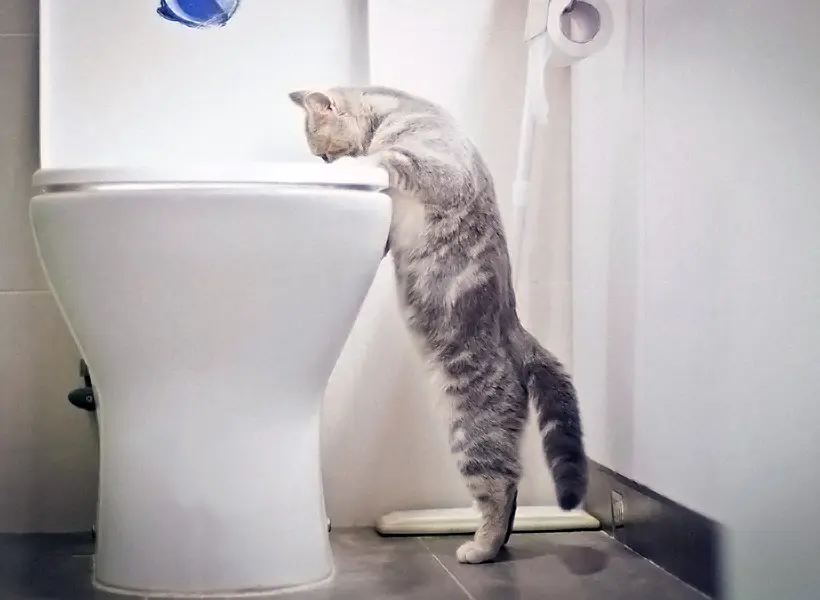My Perils of Animal Waste in the Toilet
My Perils of Animal Waste in the Toilet
Blog Article
How do you actually feel about 10 Things You Should Never Flush Down The Toilet?

When it pertains to disposing of waste, specifically animal waste, many people frequently consider the convenient choice of flushing it down the toilet. Nevertheless, this relatively easy service can have major consequences for the setting and public health. In this post, we'll check out why flushing pet waste down the bathroom is a negative idea and give alternate approaches for proper disposal.
Intro
Appropriate garbage disposal is essential for preserving ecological sustainability and public health. While it might seem harmless to flush animal waste down the bathroom, it can cause numerous concerns, both for the setting and human health.
Risks of flushing animal waste
Ecological influence
Purging pet waste presents hazardous germs and microorganisms into rivers, which can negatively impact marine environments. These microorganisms can contaminate water sources and harm aquatic life, interrupting fragile ecosystems.
Public health problems
Animal waste contains damaging bacteria such as E. coli and Salmonella, which can present major wellness risks to people. Purging pet waste down the bathroom can contaminate water materials, leading to the spread of conditions and infections.
Alternatives to flushing
As opposed to purging animal waste down the bathroom, there are several alternative disposal approaches that are much more eco-friendly and sanitary.
Composting
Composting pet waste is an eco-friendly means to dispose of it. By composting, organic matter is broken down right into nutrient-rich soil, which can be used to fertilize yards and plants.
Landfill disposal
Dealing with animal waste in a land fill is another option. While not as environmentally friendly as composting, it is a much safer choice to flushing, as it stops the contamination of water sources.
Pet waste disposal systems
There are customized pet waste disposal systems available that safely and hygienically deal with pet waste. These systems often use enzymes to break down waste and get rid of odors.
Steps to proper pet garbage disposal
To make sure proper disposal of animal waste, follow these actions:
Scooping and landing waste
Frequently scoop and bag animal waste utilizing eco-friendly bags. This prevents waste from contaminating the setting.
Using designated waste containers
Dispose of bagged pet waste in designated waste containers, such as garden compost containers or garbage dump containers. Stay clear of flushing it down the commode at all expenses.
Cleaning up litter boxes and family pet areas routinely
Frequently tidy litter boxes and pet dog areas to stop the buildup of waste and germs. Use pet-safe cleansing products to preserve hygiene.
Advantages of correct disposal approaches
Taking on correct disposal approaches for animal waste provides several advantages:
Lowered environmental pollution
Correct disposal techniques decrease the risk of environmental pollution, safeguarding rivers and ecosystems from contamination
Decreased danger of water contamination.
By avoiding flushing animal waste down the commode, the risk of water contamination is considerably lowered, protecting public health.
Boosted cleanliness and hygiene
Correct disposal techniques advertise much better cleanliness and hygiene, creating a more secure environment for both people and animals.
Verdict
To conclude, flushing pet waste down the toilet is hazardous to the atmosphere and public health. By adopting alternative disposal methods and adhering to correct waste monitoring methods, we can reduce the adverse effect of pet waste and contribute to a cleaner, much healthier world.
What To Do With Dog Poo – The Do's And Don'ts Of Disposing Of Faeces
Dog poo bins
Some councils provide dedicated dog waste bins in popular dog-walking areas that can take dog poo that has been bagged but you can legally dispose of dog waste in any public litter bin, as long as it is securely bagged. This also applies to your wheelie bin at home.
Do not flush
Water companies do not recommend flushing dog faeces down the toilet because certain parasites can survive the water processing treatment and are potentially harmful to humans. You should also never consider flushing dog poo that has been bagged down the toilet as the bags will not break down and instead create severe blockages in the sewage system.
In the woods
The Forestry Commission promotes a ‘stick and flick’ method for dealing with waste in the woods. This means finding a stick and using it to flick any poo from off the path so that it is out of the way of other walkers. You could also bury it as long as it is not in an area where there might be livestock.
Livestock
Parasites found in dog poo can be transmitted to livestock if they inadvertently eat infected faeces that has been left on grazing land. This could result in the death of sheep or abortion in cattle so you should always make sure you pick up your dog’s waste in fields where livestock could be present.

I ran across that article on Should you flush animal waste down the toilet when doing a lookup on the internet. Are you aware of another person who is enthusiastic about the topic? Feel free to share it. Thanks for going through it.
Book Report this page